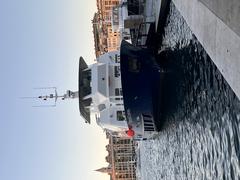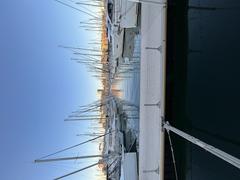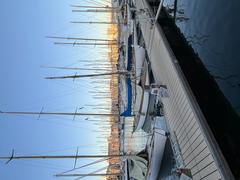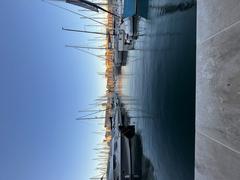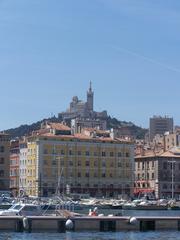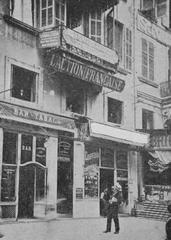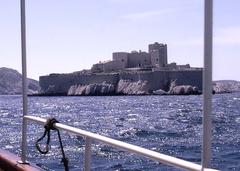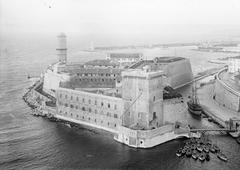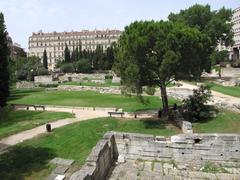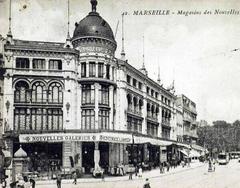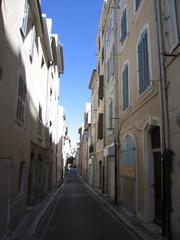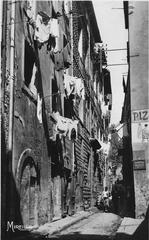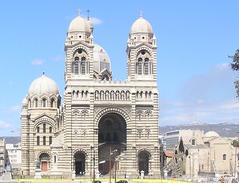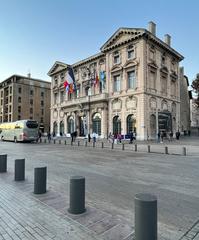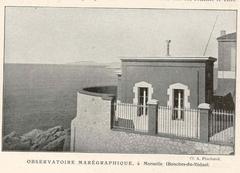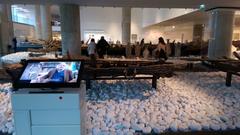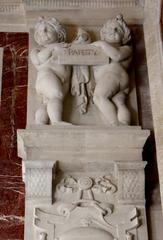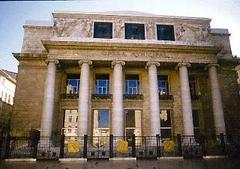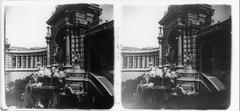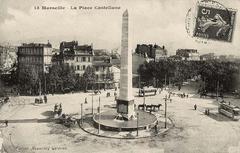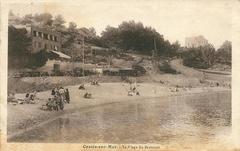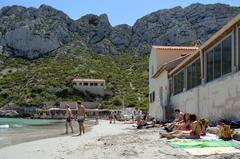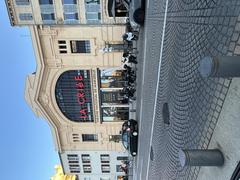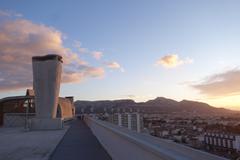
Old Port of Marseille: Visiting Hours, Tickets, and Historical Sites Guide
Date: 14/06/2025
Introduction
The Old Port of Marseille (Vieux-Port) is the living, historical, and cultural heart of France’s oldest city. Since its founding around 600 BCE by Greek settlers, the port has witnessed Marseille’s transformation from an ancient trading outpost to a dynamic Mediterranean metropolis. Today, the Old Port remains a central gathering place for locals and visitors alike, renowned for its vibrant markets, iconic architecture, and as the gateway to Marseille’s most treasured historical sites.
This guide details everything you need to know about visiting the Old Port, including opening hours, ticket information, travel tips, accessibility, and recommendations for nearby attractions. Whether you are interested in history, culture, gastronomy, or simply soaking in the atmosphere, the Old Port offers an unforgettable Marseille experience.
For additional insights and practical advice, explore resources such as My Guide Marseille and GuideTourism.
Table of Contents
- Introduction
- Historical Overview
- Visiting the Old Port: Hours, Tickets & Tips
- Must-See Attractions and Landmarks
- Local Experiences: Dining, Markets, and Events
- Practical Visitor Information
- Frequently Asked Questions (FAQ)
- Conclusion and Recommendations
- References
Historical Overview
Greek and Roman Origins
The Old Port’s history begins with the Greeks from Phocaea, who established Massalia (present-day Marseille) around 600 BCE. They chose the naturally sheltered cove of Lacydon, recognizing its potential as a maritime and commercial hub (My Guide Marseille; Marvellous Provence). This harbor quickly became the linchpin for trade between the Mediterranean and inland Europe, facilitating the exchange of goods like wine, olive oil, and ceramics (Snippets of Paris).
After Roman annexation in the 1st century BCE, the port retained its economic significance as a gateway for goods and ideas across Roman Gaul (Slow Travel News).
Medieval to Modern Transformations
During the Middle Ages, the Old Port was fortified and remained vital to Marseille’s prosperity and defense. The construction of quays and landmark buildings, such as Hôtel de Cabre and Maison Diamantée, marked periods of urban expansion (Marseille Tourisme). Under Louis XIV in the 17th century, the city’s ramparts were demolished to allow growth, and Fort Saint-Jean and Fort Saint-Nicolas were built to secure the harbor (My Guide Marseille).
With the Industrial Revolution, the port evolved, and commercial operations shifted westward to accommodate larger ships, but the Old Port retained its symbolic and social centrality (Marseille Tourisme).
The 20th and 21st centuries brought reconstruction after wartime damage and ultimately a transformation into a pedestrian-friendly, vibrant urban space—culminating in a major redevelopment in 2013 that honored the port’s long history while adding modern amenities (Roberto Alborghetti).
Visiting the Old Port: Hours, Tickets & Tips
Visiting Hours
- Old Port Area: Open 24/7 as a public space.
- Fish Market: Daily, 8:00 am – 1:00 pm, Quai des Belges.
- Museums (e.g., MuCEM): Typically open 10:00 am – 6:00 pm, closed Tuesdays. Fort Saint-Jean is open Tuesday to Sunday, 10:00 am – 6:00 pm.
Tickets and Guided Tours
- Access to the Old Port: Free and open to all.
- Museums: MuCEM tickets cost about €10–€11 for adults; entry is free for children under 18. Combined tickets for MuCEM and Fort Saint-Jean available.
- Boat Tours: Prices range from €10 (Frioul Islands ferry) to €40 (Calanques cruises). Purchase at port kiosks or online.
- Guided Walking Tours: Available from €20–€50 per person, often including Le Panier and other historical sites.
Getting There and Accessibility
- Public Transport: Take Metro Line 1 (Vieux-Port–Hôtel de Ville), trams, or buses. The area is well-served and easy to reach from Marseille Saint-Charles train station (Nomadic Matt).
- Parking: Underground car parks (e.g., Parking Indigo Vieux-Port) nearby. Expect €2.50–€3.00 per hour.
- Accessibility: Promenades and key attractions are wheelchair-friendly, with ramps and elevators at major sites.
Best Time to Visit
- Spring (April–June) and Autumn (September–October): Pleasant weather and fewer crowds.
- Summer (June–September): Lively events but busier and hotter.
- Early mornings are best for the fish market and peaceful walks; evenings for sunsets and nightlife (The World Was Here First).
Must-See Attractions and Landmarks
Fort Saint-Jean
A 17th-century fortress at the port’s entrance, now part of MuCEM and connected by a modern footbridge. Offers panoramic views and exhibitions (Nomads Travel Guide).
Fish Market
Held each morning on Quai des Belges, this traditional market is a lively spectacle and the best place to sample Marseille’s seafood culture (Destination Abroad).
MuCEM (Museum of European and Mediterranean Civilisations)
A striking museum complex exploring Mediterranean history and culture, with exhibitions, rooftop views, and direct connection to Fort Saint-Jean.
Le Panier District
Just north of the port, Le Panier is Marseille’s oldest quarter—famous for its colorful buildings, artisan shops, and historic charm.
Architectural Highlights
- Ombrière: A mirrored canopy by Norman Foster, popular for photos and shade.
- Hôtel de Ville: Marseille’s baroque city hall.
- Saint-Ferréol les Augustins Church: Overlooks the port’s south quay.
Local Experiences: Dining, Markets, and Events
- Seafood Restaurants: The Old Port is the place to try bouillabaisse, with renowned venues like Chez Fonfon and Le Miramar (The World Was Here First).
- Cafés and Bars: Lining the quays, offering local wines, coffee, and Mediterranean views.
- Festivals: Bastille Day fireworks, Fête du Panier in June, and the Christmas Market in December bring color and life to the port (Nomads Travel Guide).
Practical Visitor Information
Safety
The Old Port is generally safe, but take normal precautions against pickpockets, especially in crowded areas and at night.
Facilities & Amenities
- Restrooms: Available near the fish market and tourist center.
- Wi-Fi: Public Wi-Fi in some areas and most cafés.
- Tourist Information: Main office at 11 La Canebière.
Accommodation
- Hostels: Dorms from €30/night (e.g., Vertigo Vieux-Port).
- Hotels: Mid-range from €100–€180; luxury from €250.
- Tip: Book ahead in summer or during festivals (Nomadic Matt).
Frequently Asked Questions (FAQ)
Q: What are the Old Port of Marseille visiting hours?
A: The Old Port is accessible 24/7. Markets, museums, and tours have specific hours (generally 10:00 am – 6:00 pm for museums).
Q: Are tickets required to visit the Old Port?
A: No tickets are needed for the port itself. Museums and boat tours require separate entry.
Q: How do I get to the Old Port?
A: Use Metro Line 1 (Vieux-Port–Hôtel de Ville), buses, or trams. Parking is available but limited.
Q: Is the Old Port accessible for people with disabilities?
A: Yes, with ramps and accessible facilities at major sites.
Q: What are the best nearby Marseille historical sites?
A: Fort Saint-Jean, Le Panier, MuCEM, and Basilique Notre-Dame de la Garde.
Conclusion and Recommendations
The Old Port of Marseille is a fascinating blend of ancient heritage, modern vibrancy, and Mediterranean charm. Free public access, excellent transport links, and a wealth of attractions make it the ideal starting point for any Marseille adventure. For the most enjoyable visit, plan for spring or early autumn, book tickets for major attractions in advance, and explore both the famed sites and hidden corners of the port.
For up-to-date tips, guided tours, and exclusive offers, consider downloading the Audiala app. To further enrich your stay, follow official tourism channels and reputable guides such as Marseille Tourisme and Nomadic Matt.
References
- This guide integrates information and recommendations from:
For more details, explore the above sources and check the official Marseille tourism website.

